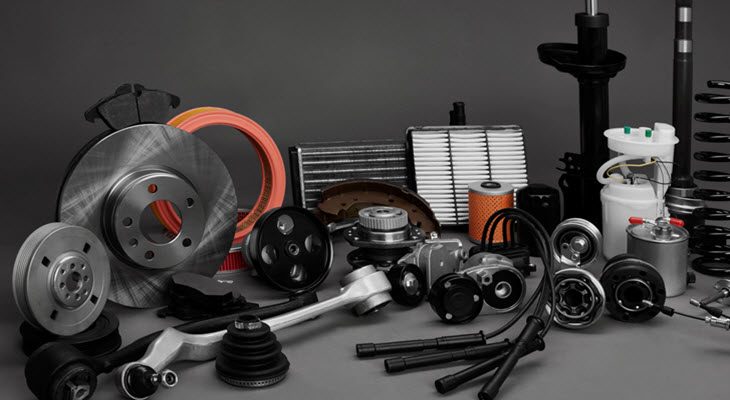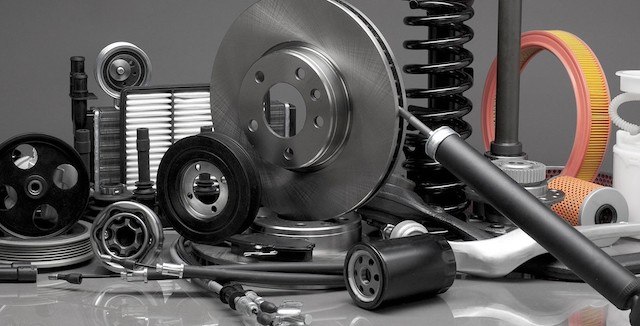OEM Equipment Parts: Enhance Your Machinery with Genuine Components
OEM Equipment Parts: Enhance Your Machinery with Genuine Components
Blog Article
The Benefits and Downsides of Choosing OEM Building Components Over New Parts for Your Equipment
When it comes to maintaining and repairing equipment, the decision in between going with initial devices maker (OEM) construction parts versus repairs is a critical consideration for many organizations. The selection in between these 2 choices can have substantial ramifications for the efficiency, reliability, and durability of the tools in inquiry. While OEM parts are made to fulfill the certain needs of the devices and are frequently related to a greater level of top quality and compatibility, there are likewise drawbacks to be considered, such as possible expense ramifications and accessibility issues. Comprehending the benefits and disadvantages of each option is important in making educated choices that can impact the efficiency and effectiveness of your tools.
Top Quality and Compatibility Advantages
When thinking about the high quality and compatibility benefits of OEM building parts versus new parts, it is necessary to review their accuracy design and smooth assimilation capacities. OEM building and construction components, being initial tools made by the same company that produced the equipment itself, are designed to exact specifications.
In contrast, new components may not use the same level of accuracy design and compatibility as OEM parts. While brand-new parts might be much more readily available and cost-effective in some instances, they commonly lack the meticulous design and top quality guarantee that come with OEM building components.

Greater Expense Factors To Consider
Offered the remarkable high quality and compatibility benefits of OEM construction parts over new parts, it is important to now resolve the element of greater price factors to consider in the decision-making procedure. While OEM parts are understood for their exact fit and high efficiency, they commonly come at a greater price point compared to aftermarket options. The initial financial investment in OEM parts may seem a lot more expensive, however in the future, they can show to be extra cost-efficient as a result of their longevity and integrity.
One key aspect to take into consideration when assessing the higher expense of OEM building and construction components is the prospective financial savings in terms of minimized upkeep and fixing costs. OEM components are engineered to satisfy the details requirements of the equipment, which can cause fewer breakdowns and less downtime. This can translate into substantial price financial savings for devices owners in regards to reduced repair service and substitute prices over the lifespan of the machinery.
Additionally, investing in OEM components can also add to keeping the resale value of the tools. Eventually, while the greater expense of OEM building parts might need a bigger ahead of time investment, the long-term advantages in terms of reliability, performance, and cost financial savings make them a useful and feasible option for equipment owners looking to optimize the value of their investments.
Reliability and Service Warranty Protection
In evaluating the choice in between OEM construction components and new parts, a critical element to consider is the degree of reliability and service warranty protection given. OEM building components, being produced by the initial devices supplier, are created to meet the precise requirements of the tools, making sure a high level of integrity. These components go through rigorous screening to ensure compatibility and longevity, decreasing the threat of malfunctions and malfunctions. Furthermore, OEM components typically come with a guarantee that supplies coverage for click a given duration, supplying satisfaction to tools owners in instance of unforeseen concerns.
On the various other hand, new parts might not constantly provide the very same degree of reliability as OEM components, as they might not have been particularly created for the equipment in question. When taking into consideration reliability and guarantee insurance coverage, opting for OEM building components might provide an extra trustworthy and safe and secure solution for tools maintenance and durability.
Efficiency and Long Life Enhancements
Having actually developed the value of dependability and service warranty insurance coverage in the option between OEM building and construction parts and new components, the emphasis currently changes towards evaluating just how these components add to efficiency and longevity improvements. OEM building and construction components are engineered to exact specifications, making certain seamless combination and optimum efficiency within the tools. This accuracy causes improved general performance and productivity, as the components are developed to work harmoniously with the machinery they are meant for.
Additionally, OEM parts commonly undergo strenuous testing to meet market criteria and producer needs, guaranteeing a higher level of quality compared to common choices. This remarkable quality converts right into boosted resilience and long life for the tools, decreasing the risk of unanticipated failures and expensive repair work. By using OEM building and construction parts, tools proprietors can experience improved efficiency, extended life-span, and reduced downtime, ultimately causing enhanced functional efficiency and cost-effectiveness in the future.
Possible Restricted Availability Problems

When relying upon OEM building and construction components for tools repair and maintenance, one significant downside that can emerge is the possible minimal accessibility of these parts. Due to factors such as manufacturing timetables, supply chain interruptions, or the discontinuation of specific components by manufacturers, there might be circumstances where OEM parts become limited or perhaps out-of-date. This scarcity can cause hold-ups in equipment servicing, long term downtime, and raised prices related to sourcing alternate remedies.
Restricted availability of OEM building and construction parts can additionally interfere with the effectiveness of maintenance groups, as they may require to invest additional effort and time browsing for suitable substitutes or awaiting back-ordered parts to show up. In cases where details OEM parts are essential for optimum devices performance or security conformity, the unavailability of these parts can present major functional risks. To minimize these difficulties, tools managers should keep clear communication with providers, discover choices for stocking critical parts in advancement, and consider different options or aftermarket parts when OEM alternatives are scarce.
Verdict
In final thought, when considering whether to choose OEM construction components over new components for equipment, it is very important to other consider the benefits of quality, compatibility, integrity, efficiency, and durability against the downsides of greater price and prospective minimal accessibility. Inevitably, the decision needs to be based on the certain demands and top priorities of the devices proprietor, as well as the significance of guarantee protection in making certain long-term fulfillment and functional performance.
When it comes to fixing and keeping tools, the choice in between opting for original devices producer (OEM) construction components versus brand-new components is a crucial factor to consider for many services.Provided the superior high quality and compatibility advantages of OEM building components over new components, it is crucial to now deal with the element of higher cost factors to consider in the decision-making procedure. OEM Equipment Parts.On the various other hand, new parts may not constantly supply the exact same level of reliability as OEM parts, as they might not have actually been particularly created for the devices in question.When relying on OEM construction components for devices maintenance and repairs, one substantial downside that can develop is the prospective limited schedule of these components. To alleviate these difficulties, devices managers should maintain clear interaction with distributors, check out choices for stocking vital parts in advancement, and take into consideration alternative services or aftermarket parts when OEM alternatives are limited
Report this page